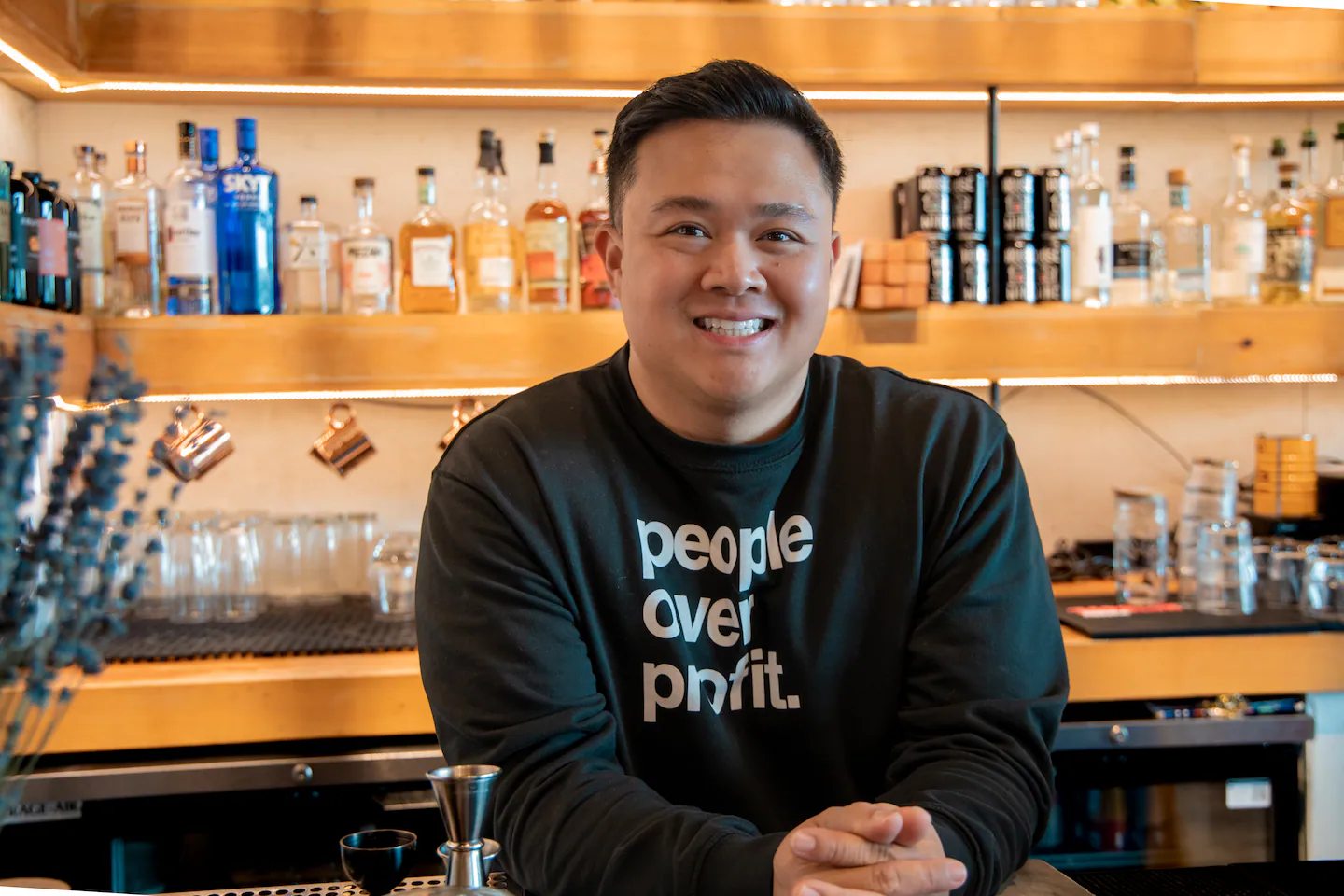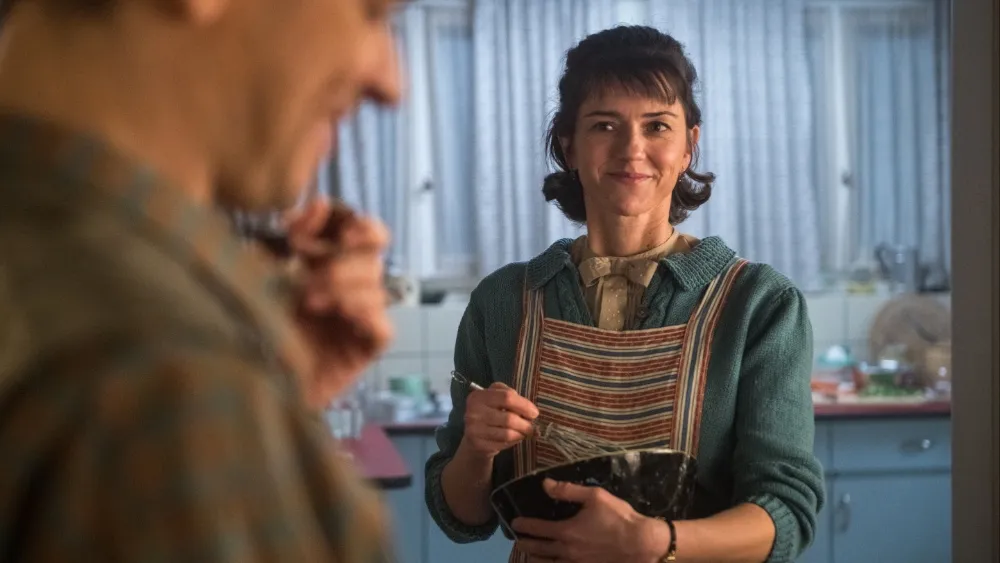Copyright The Boston Globe

It was a hole-in-the-wall hidden gem. I’d be doing homework in the corner, and my parents and I would be yelling at each other. We still have it to this day. My parents still work there, which is incredible. I’m the first generation born here. My parents came here from Vietnam in 1980. With that, there were a lot of burdens that I had to carry. My mom knew how to cook. Everything else was up to me. I remember putting a menu together, trying to get into front of the house, trying to get an LLC. Doing it for her and the family was my obligation. I think about this all the time: My dad works at an aerospace company. He still works 7 to 5, comes home, and then works at the restaurant. He’s done that for 19 years. When I’m tired, I look at him and their work ethic. They’re both in their 60s, and they love what they do. They really love cooking, and it’s always been a part of my life and my family. We come from a big family, and dinnertime was the way to show love and socialize and talk to each other. It was about acts of service. There was always a great Vietnamese dinner at home after school. That was the best thing ever. Why did you want to run a restaurant? When we opened up Pho, I fell in love with the industry. I saw the old-school way of restaurateurs, and then I saw the new way of restaurateurs, where the American dining scene is very different. It’s very social. I wanted to merge the two. Back in the day, there was no ramen shop in Connecticut. Ramen had just made it to the East Coast with David Chang. … Anthony Bourdain was kind of rock star-ish. And so I fell in love with the industry and chose to open up ramen instead of pho. I sought to learn ramen with a ramen master. In Japanese culture, they take a lot of time to master their craft. They have ramen wars, where they rank the ramen masters. Chef Nakamura was here from Japan. I reached out and had one-on-one lessons with him for several weeks. He taught me ramen. I opened my own hole in the wall, hidden gem — and no parents yelling. Mecha means mom and dad, mom and pop, in Vietnamese. What is it about ramen specifically that you love? Oh, man, there’s so many parallels to pho. Ramen was the new, sexy noodle in a bowl at the time, but it gave you the same comforting feeling. And this is all about emotions — which any bowl of well-crafted noodle soup does. You can have a bowl of ramen and be full. When you eat, it’s so intimate. You don’t really share a bowl of ramen. You get to customize your bowl, so it’s yours. It’s that friend, or that hug, that you just need for the day. There’s a lot of food in the same category, but ramen, in particular, and pho, just for me, provides that emotional hug. And it’s cheap, at the end of the day. You could walk out having spent less than $20. Why did you choose to expand to Massachusetts? In Connecticut, we were between Boston and New York, both cultures. But, come to find out, people didn’t know what [ramen] was beyond instant ramen. There was a lot of education that we had to do. We almost didn’t make it in the first year. People were like: Is this what I had in college? I remember struggling in that first year but really loving that I had my own restaurant and teaching people how to eat ramen. And it just got busier, busier, and busier. We got to play around with the food more and add more ramen options. To survive, the menu evolved and adapted to the community. As I said earlier, there’s the American dining scene, which is very social. Tapas was getting hot back then, and a lot of shareables, which was quite the opposite of ramen, which is intimate, solo, a hug in a bowl. With that adaptation, we started adding things to our menu: street food, appetizers, getting a chance to play around, being creative. We got busier. My goal was to always expand within Connecticut, because, again, there aren’t as many good options out here in terms of Asian food. By then, it was Chinese takeout and fusion sushi spots. That was it. You’d get some hidden gems here and there, with Thai and Vietnamese. We opened up in Norwalk and New Haven. Coming up to Boston made sense because it was the closest market, it’s an easy ride up here, and I have family up here. The Massachusetts market is special. There’s so much diversity here. At first it was kind of scary, in that there’s a lot of competition. But really that just meant there were more guests to feed, more mouths to feed, because they knew what their food was. We didn’t have to educate anyone. And Legacy Place just reminds me of Connecticut so much, It’s suburban, family-oriented, community-based. Speaking of community: What’s your preferred pizza in New Haven? We could talk about this all day. To make it short: Mine is [Frank] Pepe. When Pepe is on their game, you cannot even compete with them. And there’s a hidden one that I love in West Haven called Zuppardi’s. It’s still New Haven-style pizza. They’ve been around for 100 years, but they have this special sausage that they make with fennel and everything. It’s just amazing. What do you think of the food scene up here? What’s great, and where is there room to improve? Boston’s so diverse. But on the East Coast in particular, and even Boston, we’re always a few years behind the West Coast, especially with Asian food. Asian food usually comes with the trends out of Asia to the West Coast. You’ll monitor West Coast restaurants, whether it’s Vietnamese, Cambodian, Laos, Japanese, Chinese; you’ll see it from either SoCal, San Francisco, or San Jose. Slowly, it starts to get to the East Coast. But we’re still a couple years behind, right? You’ll see a lot of authentic Asian places in Boston, and they’re good. They’re really good. But I think where the improvement could be is: How do we merge and become even more elevated, with good food, good ambiance, and great service? In Boston, I think we’re still in that mom-and-pop era, on the verge of: You can be really recognized with Michelin because your food is great but also [have ambiance]. Where do you like to eat when you’re up here? Any shout-outs to places that you enjoy? There’s a pho shop serving a Vietnamese dish that’s really new, and I’d only been able to find it in New York: bò né, a Vietnamese brunch dish served in a cast-iron pan with beef pate, two fried eggs, and a side of baguette. It came out of Vietnam, went to the West Coast, and now the East Coast is picking it up. It’s in Dorchester: Gao Vietnamese Kitchen. What’s your least favorite food? That’s a tough one. I have a lot of Irish friends, and I know a lot of chefs, and sometimes we’ll get into rice and potato battles. It’s weird. I find myself having to defend rice a lot. You know, plain white rice. You would think it’s plain, but it doesn’t take too much to make it good, right? A little soy sauce and it’s great, or eggs. My argument is that you have to put a lot of damn fat into potatoes to make them good. You have to either fry them in fat and salt, or use butter or cream or milk to make mashed potatoes. Then it becomes delicious. My argument was always: Hey, potatoes are overrated, because it’s really not the potato you’re eating at the end of the day. It’s all the fat that comes with it. That’s fair. What would you eat for your last meal? Oh, man. It would be, for sure, a big bowl of pho, maybe with some tinned seafood from Spain. Give me a baguette with that and some pate. I know that’s a weird mixture, but if it’s my last meal, I’m going out hard. If you had to describe Legacy Place in a sentence, what would you say? It reminds me of home. That’s how I grew up, in the suburbs. Legacy Place is just a great mix of families and local residents and people looking for a casual spot for dinner. I want to change places like Legacy Place and their meaning — I know I’m going over a sentence — I want to be a contributor to elevating food in the suburbs as well, so that you don’t have to travel into traffic and the main downtown areas. You can get it in your backyard. We want to be your neighborhood noodle bar. You can come here after soccer practice, with your kids, on a date, or meet your friends for a casual dinner. I believe that this industry is the fabric of the community, and I’m just honored to represent an Asian part of that. Interview was edited for clarity.



